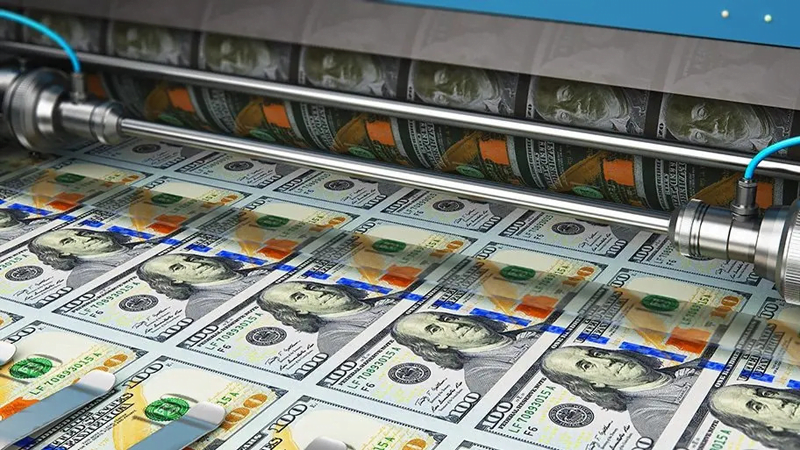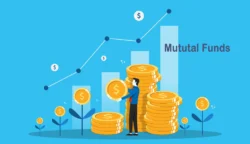Money-printing, also known as monetization or “money-financed fiscal programs,” happens when the government funds itself through the issuance of non-interest-bearing obligations. These obligations might be money or savings held by banks at their central bank.
The government utilizes inflation to cover part of its expenditures via monetizing debt. But that’s ok. With economies contracting by up to one-third on an annualized basis by 2020, central banks have reason to be concerned about deflation rather than inflation. In unprecedented guidance issued in 2020, the Federal Reserve stated that it may allow inflation to surpass its 2 percent objective in order to avoid a pandemic-induced recession; nonetheless, it will not hurry to raise rates to combat inflation.
Several experts have urged caution in monetization during the epidemic. Some have even advocated for the notion to be implemented by emerging-market central banks, as long as they have adjustable currency values and very well inflation expectations. Of course, any printing of money would need regulations and careful messaging about the scope and length.
What is the process of monetization? The central bank might purchase government bonds and then cancel them, or it might commit to rolling over the debt forever. In either case, money would be created at no direct expense to the government. Central banks would buy the bonds by crediting freshly produced reserves to the state’s central bank balance. The government might then utilize the reserves, which would become the central bank’s obligation, to fund its budgetary plans. Alternatively, the central bank may try to open accounts for the population at the central bank with fresh cash, a concept that is gaining traction.
The U.S.’s money printing and the de-dollarization
As US equities try to reach new highs, boosted by waves of extreme fiscal stimulus, several nations are speeding up de-dollarization measures to minimize dependence on the USD amid concerns of an armed US dollar.
For these reasons it is possible that the demand for the U.S. dollar may decrease which will have a crucial effect on the country’s economy. However, as the reports show, the U.S. dollar remains at its steady level and the threat of de-dollarization, at some point, can be an exaggerated viewpoint. There can be several reasons behind the U.S. dollar hegemony and one of the main reasons is Forex trading where traders are exchanging currencies. In the foreign exchange market, the US domestic currency is in high demand and Forex brokers in the U.S. usually offer dollar services to both domestic and offshore clients. Because of these services as the demand for the USD increases the country’s economy and dollar strength can remain. And for these reasons currency markets, including Forex trading can help the country to overcome the crisis which was caused by the COVID-19 pandemics.
The Dow Jones Industrial Average rose 1.16 percent in April, the S&P 500 rose 1.47 percent, and the Nasdaq Composite rose 1.74 percent, owing to increased support from the government and prompt immunizations.
The US Fed has lowered interest rates to zero and initiated limitless quantitative easing as part of its attempt to resuscitate the pandemic-ravaged US economy. Following the newly enacted “Relief Bill” of $1.9 trillion, the US has unleashed $5.2 trillion in fiscal stimulus expenditure since the coronavirus epidemic began or over 25% of US GDP in 2020.
Because some developing economies continue to rely largely on the dollar, significant money printing by the US may devalue their own currencies. However, nations with a high concentration of forex reserves in dollar-denominated investments may experience an asset “bubble and bust” in the near future, from which recovery may be challenging.
Fears of dollar-related financial hazards, as well as the geopolitical hazards of an armed currency if the Biden government maintains Donald Trump’s combative posture, are leading several nations, particularly developing markets, to call for de-dollarization as soon as possible.
The US dollar’s value of international currency reserves fell to 59 percent in the fourth quarter of 2020, the lowest point in a quarter-century, according to IMF statistics released on March 31.
As the United States’ new sanctions erode faith in the dollar, the Russian government is likewise attempting to separate itself from the dollar system in order to limit any potential economic harm. According to the Sputnik article, Russia is continuing its efforts to integrate domestic payment methods with international nations such as China and Japan in order to eliminate the need for dollars.
What are the challenges of U.S. money-printing?
One of the challenges that are straight to the U.S. after money-printing is to keep inflation under control. The quantity of money in a country’s economy determines its monetization potential. As approximated, a program that costs around 1% of GDP and is completely monetized corresponds to a 10% rise in the price value.
Of course, even the mention of monetization raises concerns about government intrusion and runaway inflation. Many governments prohibit central banks from purchasing state debt at all. Some only enable a certain amount to handle short-term monetary requirements. Others demand the state to return to the central bank as soon as possible.
The Fed quickly began acquiring securities on a never-before-seen level, and it became a buyer of any treasuries that its banks wanted to sell. With these transactions, the Fed significantly increased its cash flow assets and, as a result, the “excess reserve” obligations of its banks. When viewed from the standpoint of the Fed’s individual banks, these “excess reserves” represented their new assets, substituting the sold treasuries. In summary, it should be said that the Fed’s “excess reserves” created fresh and rising financial assets.







